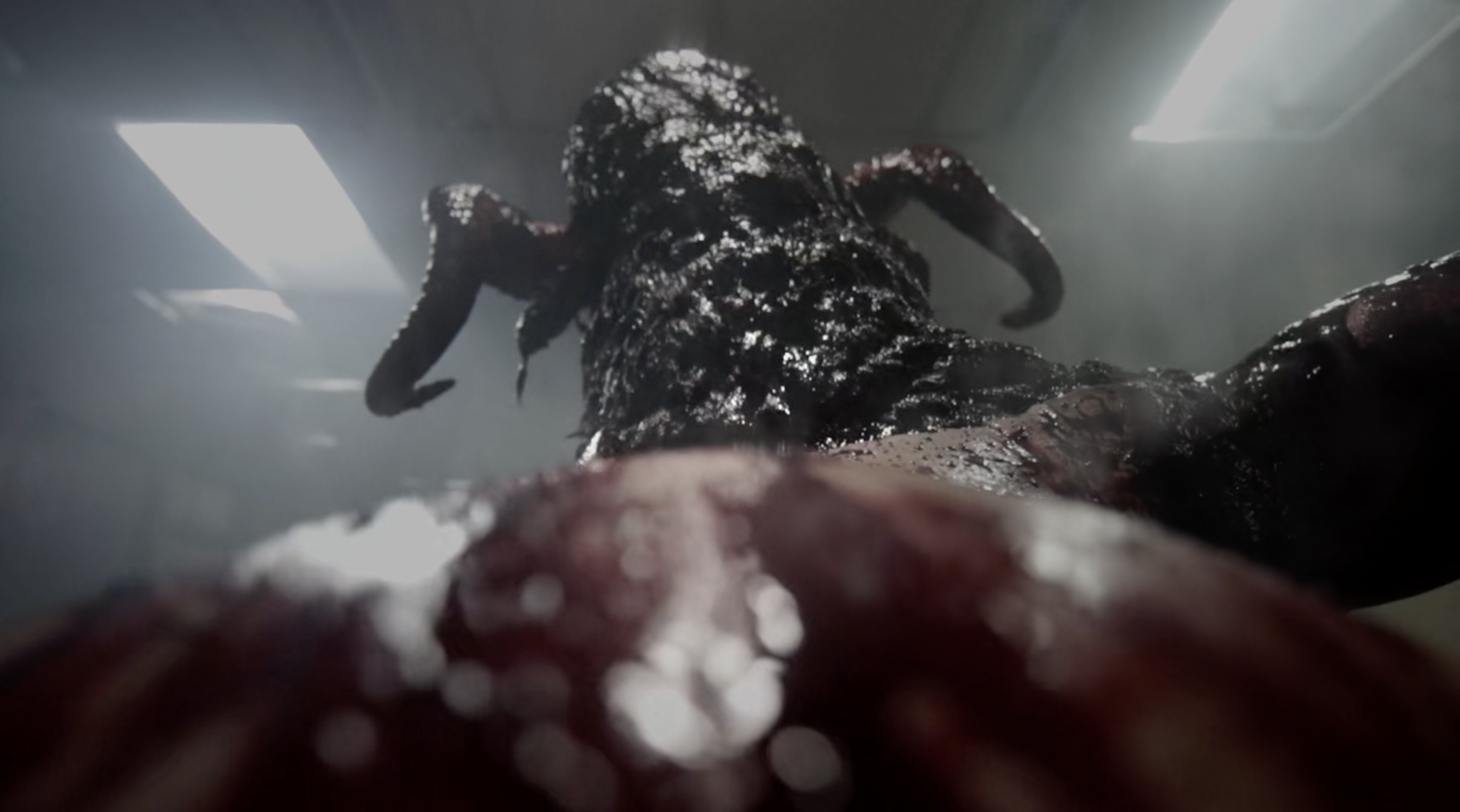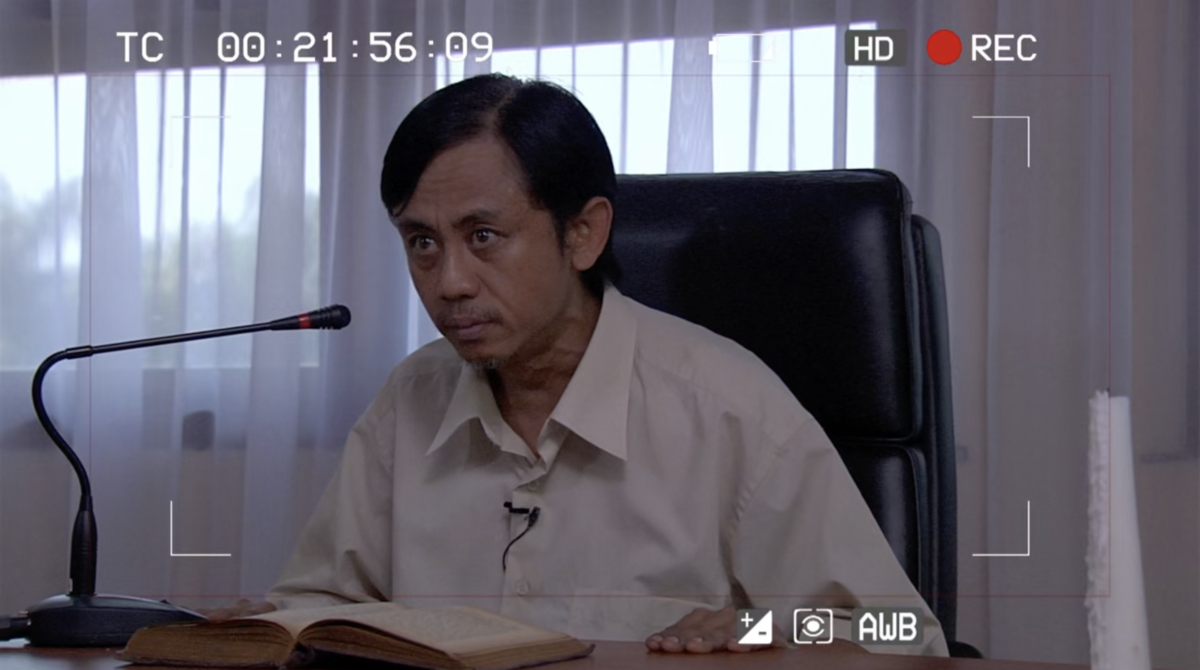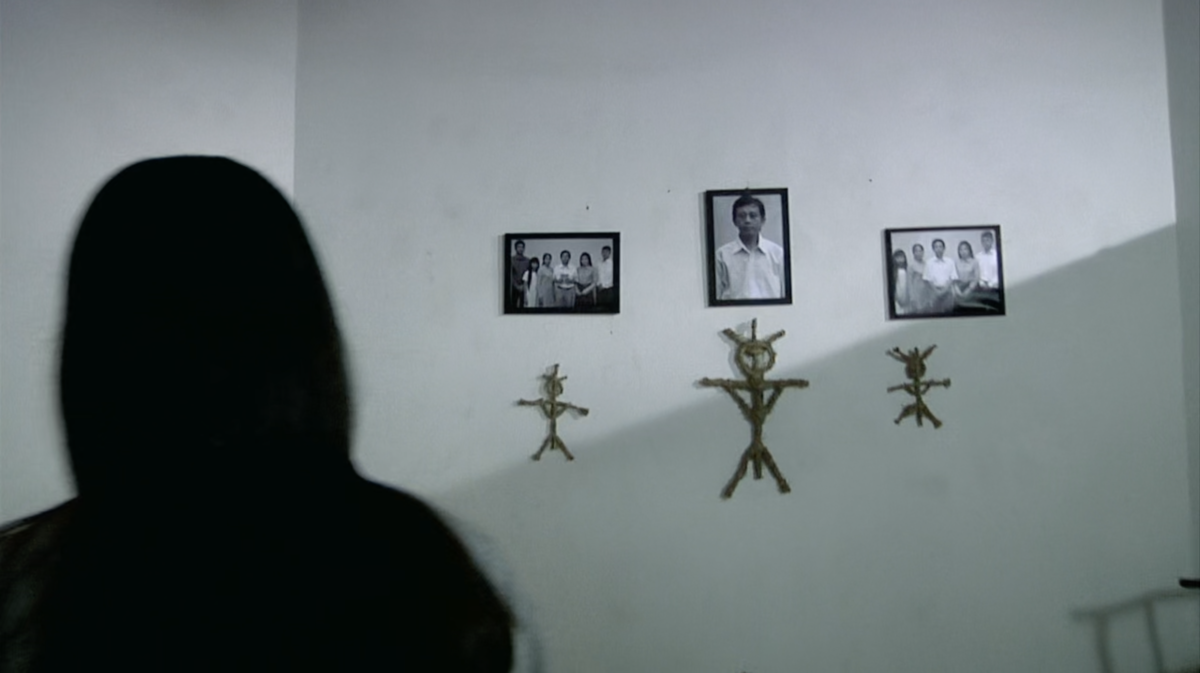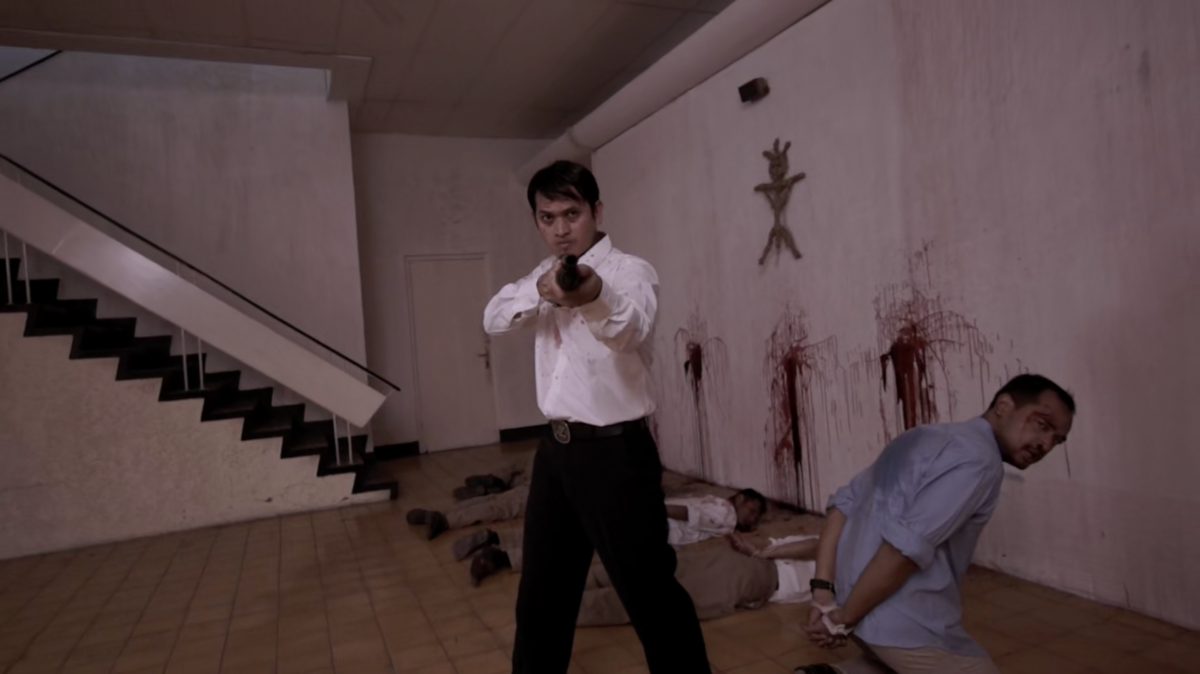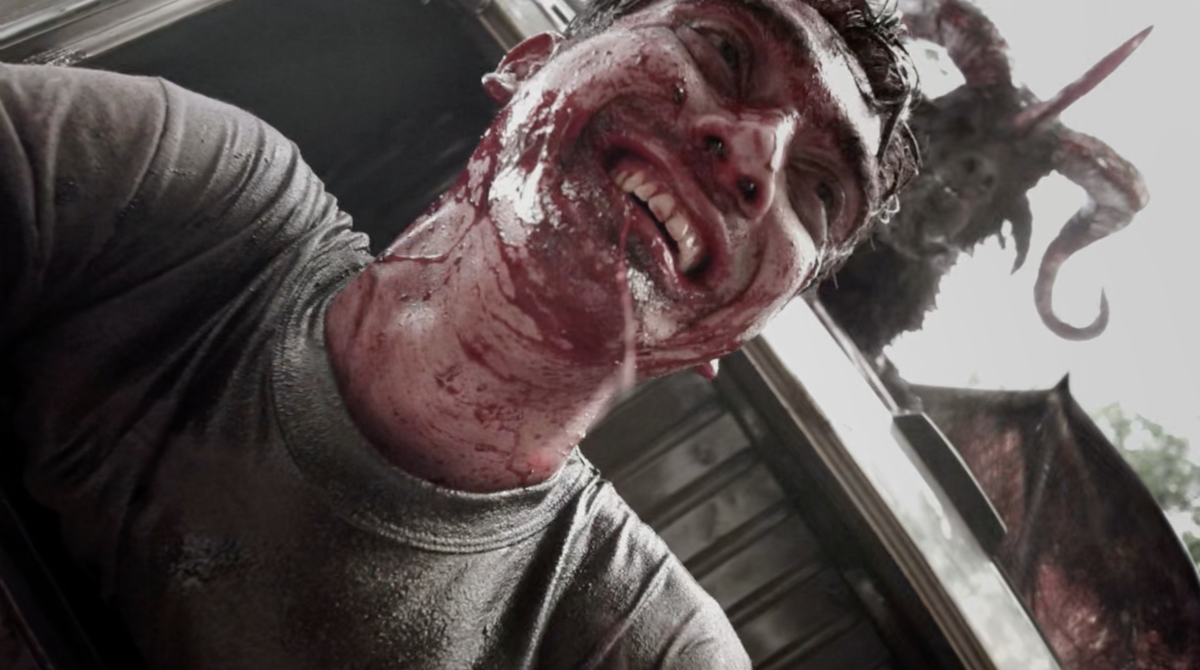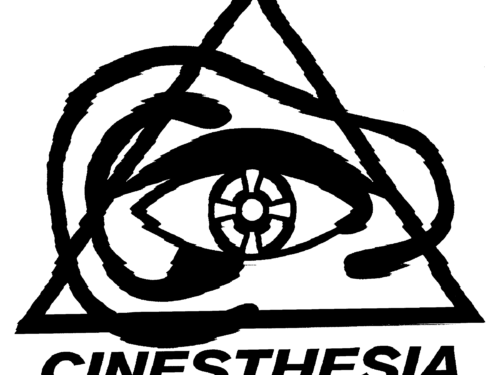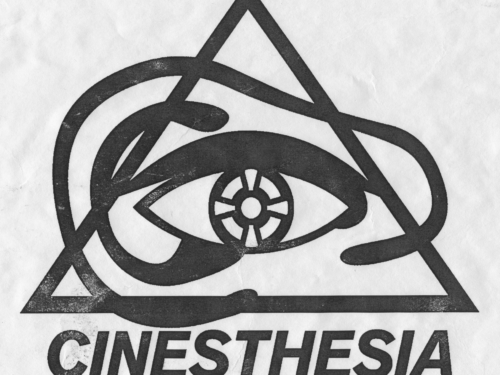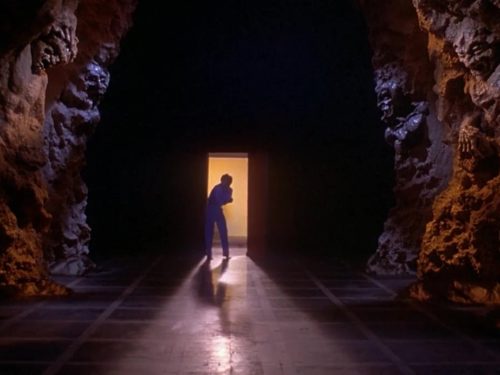The show-stopping highlight of the V/H/S anthology series, Safe Haven follows a camera crew being swallowed alive by an inexplicable evil while trying to expose a mysterious Indonesian religious collective
“What’s your opinion of organized religion?” — Joni, Safe Haven
No horror film will ever come close to the real-life, visceral despair of the Jonestown “death tape.” The widely available audio of the final 44 minutes and 30 seconds of the cult, from the time leader Jim Jones calls his followers together in the pavilion to the moment over 900 people die from voluntarily ingesting or being forcibly injected with cyanide, is one of the most chilling recordings you can experience, as children succumb, followers panic, and cult leaders spout madness, threats, and violent rhetoric cloaked in warped-religious ideology. Its catastrophic psychosis is untouchable, and yet, many a post-’78 filmmaker making an atrocity grab-bag horror film has cited the horrific mass-murder-suicide as loose inspiration. Timo Tjahjanto and Gareth Evans do when they talk about Safe Haven, their collaborative contribution to the anthology film V/H/S/2 (2013). They pay lip service to Jonestown in as much as their short film, a rip-roaring gonzo burst of apocalyptic mayhem, was the result of an occult concept that Tjahjanto had been kicking around but had never materialized. Like with much of the series that houses this short-form masterwork, any statements of purpose are mostly a lark.
The prime directive of anthology horror is to riff and rage, to experiment with technology and screw around with story conventions for the hell of it. If a segment doesn’t totally work, it’ll be over soon, with another waiting in the wings to fill the void. Suffice it to say that Safe Haven is not a short film that takes seriously the real-world horror of a cult. It’s not equipped to comment on the manipulation of the leaders, the desperation of the followers, or the terror and chaos of the downfall. Whether Tjahjanto and Evans’ feint of inspiration is genuine or just provocation, Jonestown is mere flavoring, the culmination of an unsavory history of organized fringe groups that’s parlayed into a prefab horror narrative. If it’s in poor taste, that’s the point. All the better. That’s not to say that Safe Haven is a hollow exercise — far from it. It is clearly a wild cocktail of ideas, an experiment in paint-at-the-wall maximalism in miniature that basically tilts the V/H/S omnibus off its axis. Consider it the bookend of the found footage boom, the logical endpoint where spooky realism is left behind and the subgenre eats its tail. Tjahjanto and Evans take the low-stakes gig and have at it like there is nothing to lose. The ultimate goal of these anthologies is to go from zero to 60 without the niceties of plot and character development and heavy-handed subtext weighing things down. But pulling off a short-form piece that both works within the schematic of the picaresque and functions as a standalone statement is harder than it sounds. Tjahjanto and Evans achieve this like gangbusters while gleefully breaking the mold.
The premise of Safe Haven is simple and familiar. It’s also compressed and distended. A young Indonesian investigative film crew based in the capital of Jakarta sets out to do an exposé on a mysterious and controversial collective, led by a cagey figure known only as Father (Epy Kusnandar, in a banger of a performance). Safe Haven is cleanly divided into two halves; it’s really two distinct, compelling movies slashed to the bone and crudely sutured together. All the more impressive because it runs just 29 minutes. The interrogative first part is abruptly abandoned for the merciless second. Bells chime and the film double clutches into stylized mania. More than anything, it’s a pulse-pounding triumph of freewheeling style and energy, overstuffed with exuberance and craft and a punk attitude. The result feels like a patchwork in the best sense: a go-for-broke chimera of ideas that gives a literal chimera-like hybrid monster the final punchline.
Most movies about cults — take fellow V/H/S alum Ti West’s feature-length Jonestown found-footage film The Sacrament (2013), for example — work their way to a mysterious, charismatic leader at the center of the labyrinth, the figurehead that everyone is desperately, futilely trying to reach and understand and get a shot at. Safe Haven starts there, with the initial confrontation with the cult leader right up front as he matter-of-factly relays his crazed beliefs, caressing his comically villainous glass of milk. This being a V/H/S short story, filmmaking technology is at the forefront; the camera crew and the act of creation are essential ingredients in the mix. As is customary, we first get the tech check: each crew member has their equipment and their perspective, some with handheld cameras, and everyone with concealed, body-worn lenses. The crew consists of lead interviewer Malik (Oka Antara); producer Lena (Hannah Al Rashid), also Malik’s fiancée; head cameraman and Malik’s best friend Adam (Fachri Albar); and general tech man Joni (Andrew Suleiman). When they first interview Father, he explains that his purpose is to open and lead his followers through a gate to paradise — hence, Paradise Gates, the name of their collective located out of the city and off the grid, in dense jungle. “No, not a metaphor! It’s as literal as it gets,” he clarifies. The crew convinces Father to let them into Paradise, to conduct the interview in a more “suitable location,” and get a look at their operation and community — to present an unbiased depiction of their beliefs, they claim.
Paradise Gates — cobbled together from a handful of different shooting locations, adding to its uncanny, labyrinthine feel — is rundown, sparsely populated, and uninviting, with rotting walls, dim lighting, blind corridors, and inexplicable pockets of activity: a small medical ward, a side room with a few heavies, and a classroom full of children. And the followers are the usual combination of guarded and begrudgingly hospitable. The seeds of child abuse are planted immediately when the crew is greeted by one of Father’s loyal subjects, Ibu Sri (R.R. Pinurti), who cuts off the girl accompanying her before she says too much. In the foyer is a makeshift mini-shrine to Father, complete with rustic handwoven figurines — à la the found-footage monolith The Blair Witch Project (1999), the stick-figure idolatry embedded throughout as homage. Tjahjanto and Evans do, after all, have the unenviable task of following up Eduardo Sánchez and Gregg Hale’s V/H/S/2 entry, A Ride in the Park, and summarily blow it away. Things go sideways almost immediately once they set up in Father’s office. His demeanor has changed and Joni notices blood on his mic. Lena gets nauseous and has to leave for the bathroom. Adam follows to check on her. Malik only gets through one question, addressing allegations of abuse. Just as Father is starting to foam at the mouth, the camera battery needs to be charged. Malik leaves Joni behind to amusingly exchange looks with Father. When he grabs the spare battery from the hatchback, he catches wind of a conversation between Lena and Adam, fed through the console in the car trunk, and discovers that she is pregnant and that Adam is the father. Before he makes it back to the office, the bells chime. “It’s time,” Father proclaims and he starts to unbutton his shirt.
In the final stretch, the polarity reverses and all hell literally breaks loose. Father jumps Joni and stabs him through the neck with a box-cutter. Followers commit mass-suicide, some by gunshot to the temple, others, particularly the children in the classroom, by drinking poison. Followers wielding guns stalk the halls blocking the crew from escaping. Lena is grabbed by a group of women and dragged to the basement. Adam fights his way back to her — past a smiling, mutilated Father with iconography sliced into his entire torso, who spontaneously combusts, and a “spider-woman” crawling across the ceiling — into the subterranean delivery room. Lena is bound down by undead nurses and is much more visibly pregnant. She soon “gives birth” to a steaming, hulking beast with horns and a goat’s head, which rips its way out of her abdomen. The Antichrist demon muscles its way out into the world, as Adam, now the only remaining crew member, struggles through hordes of undead followers, including Joni and Malik, who was executed by shotgun, and apocalyptic tableaus to reach the car and drive off. But the winged bodybuilder goat-human monster crashes his car. Injured and covered in blood, he crawls his way from the overturned vehicle as the head of the Baphomet looms over him. The creature lets out a guttural “papa,” as Adam laughs uncontrollably.
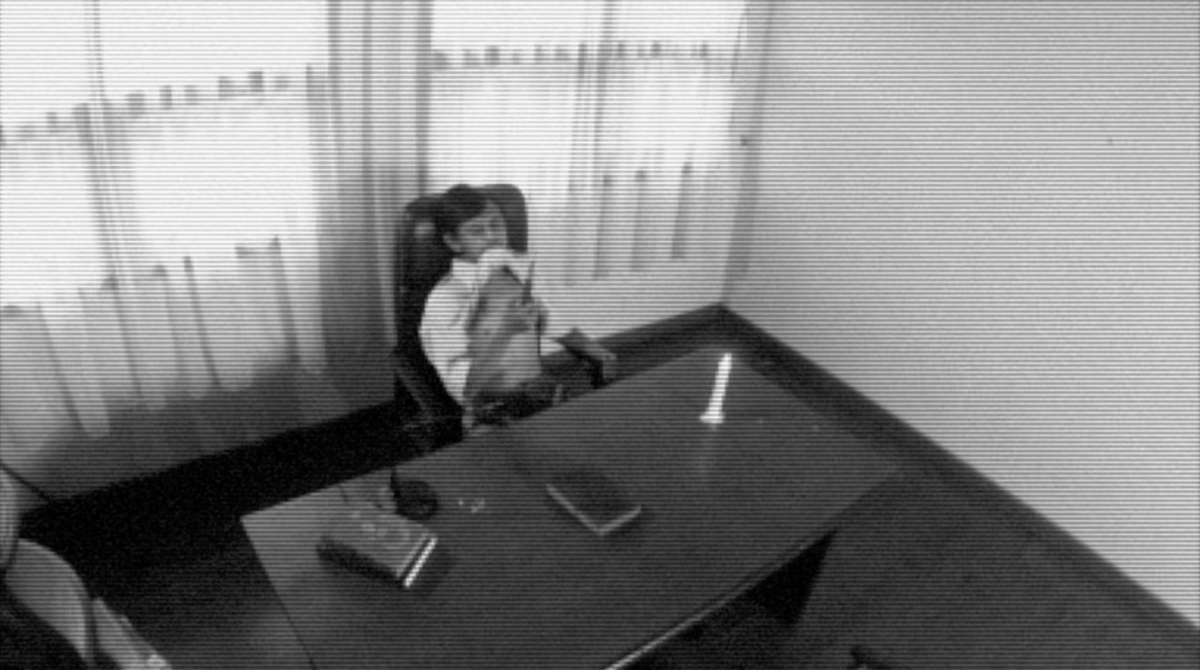
How this was all edited together — the handheld cameras, each crew member’s spy cams, the CCTV footage — and by who, in the diegetic world of the framing sequences, is one of the prevailing mysteries of this anthology series. V/H/S on the whole, and V/H/S/2 in particular, is not all that concerned with preserving the core premise. Found footage orthodoxy is mostly out the window. V/H/S/2 features GoPro videos, bodycams, digital camera footage, and even ocular implant technology, all of which somehow made its way onto chintzy home video format in a squalid suburban home, but without any significant image degradation. It’s an absurdity not meant to be solved. The core thesis being: this outmoded technology is essentially inextricable from the gory, titillating forgotten horror dregs of yore. Reinforcing the subliminal connection is sufficient. But Safe Haven shows a brazen ambivalence toward nostalgia. It’s drawing from alternative reference points and has different aims not so much rooted in the past. It’s satanic panic by way of modern action movies, crime syndicate epics, and video games. And it breaks the found footage setup almost immediately while still playing coy, indulging just one hard cut to the SMTE ECR-1-1978 color bars and 1kHz sine wave tone. What Tjahjanto and Evans are more interested in is the potential for kinetic POV, which brings in a whole constellation of new, medium agnostic influences. Safe Haven‘s back-half plays like a first-person shooter as Adam is forced to escape from the bowels of Paradise Gates and run a gauntlet of horrors in real time.
The crazed energy and gritty visuals feel like the natural byproduct of the collaboration between Evans, who made a splash on the international stage with his action benchmark The Raid (2011), and Tjahjanto, whose credits include the grisly 2009 feature Macabre and the L is for Libido segment of another high-profile anthology, The ABCs of Death (2012). The two would collaborate again on the brutal crime saga The Night Comes for Us (2018). In the melee of Safe Haven, Tjahjanto and Evans push their respective styles and tastes to the brink, one’s approach to claustrophobic action giving the horror a frenetic, kinetic verve, and the other’s giving the action sequences a graphic physicality that leans splatter instead of martial arts. There’s a swagger and confidence to Safe Haven that actually ends up being unique and special in both the world of V/H/S and in the greater, somewhat spotty history of horror anthologies. It stands head and shoulders over what has now become a long-running franchise. What was originally conceived to capitalize on the found-footage craze that Paranormal Activity (2007) resparked, is now dropping new installments at an annual clip. The sixth installment, V/H/S/85, just hit Shudder. It helped usher in a boomlet of digital campfire short story collections and now V/H/S is one of our longest-running horror anthology series, a 21st century Tales from the Crypt with retro-fetishism as its connective tissue.
And yet, Safe Haven grazes allegory throughout. It packs in imagery with unsettling and culturally specific connotations. It’s no small thing that this is filmed almost entirely on location in Jakarta, on the Island of Java — where both Timo Tjahjanto and Gareth Evans were living and working at the time — and predominantly in the Indonesian language. The V/H/S series proper is squarely an American phenomenon and commenting on distinctly Western touchstones — memorializing ’80s and ’90s home video saturation as well as the found footage boom around the turn of the century. So Safe Haven takes the series out of its comfort zone. It’s notable that the film crew that infiltrates Paradise Gates is primarily English speaking. Though they speak the language and look the part, they are outsiders in the eyes of the insular, fanatical collective. The young journalists are all well-meaning but also disorganized and ineffectual. And way out of their depth. These activists infiltrate with the intention to unearth the dark heart of the powerful organization without any idea whatsoever how in over their heads they are. They end up getting completely swallowed alive by an inexplicable omnivorous evil.
The degree to which the filmmakers are commenting on the still-young democracy in Indonesia, established after the fall of Suharto’s New Order regime in the late-’90s; the region’s long history of authoritarianism; the heavy prevalence of Sharia law in rural areas throughout the archipelago; or the relative influence of the Indonesian media apparatus to hold leaders accountable is debatable. But the violent imagery, drawing on mass executions, suicide bombings, and riots, is undeniably potent, bringing to the surface relatively recent pivotal events in Indonesia, such as widespread protests in 1998 that resulted in state-inflicted violence, the ongoing Papua conflict which erupts periodically in the country, and a string of horrific bombings between 2002 and 2004, especially one in Bali that killed over 200 people.
But, ultimately, Safe Haven is an adrenaline shot to the spinal column. What comes through is Tjahjanto and Evans not holding back. It’s the rare short film that feels like neither a dead end nor a springboard for a fleshed-out longform. All that you need to know and all that you need to see is contained within its short runtime. It’s immersive, burrowing deep inside the hellish corridors of Paradise Gates, with horrors around each corner, a fully-realized berserk environment. It draws on portal-to-hell stuff like Event Horizon (1997) or Hellraiser (1987) and it’s also a perfect synthesis of horror and first-person action filmmaking. The two filmmakers have spoken about the strict censorship board in Indonesia and having to work within the confines of a system that cracks down on sex and violence. So, through this horror hodge-podge with baked-in authoritarian iconography, Safe Haven shines as a no-fucks blast of creative liberation.
You could even say that Tjahjanto and Evans perversely align with the cult leader himself: madmen with a bloodlust amassing a following in the name of unbridled hedonistic excess — filmmaking pleasure for pleasure’s sake, the nastier the better. The short story smorgasbord format indulges this mindset. V/H/S and all its cinematic forebears — Dead of Night (1945), Creepshow (1982), Trick ‘r Treat (2007), Twilight Zone: The Movie (1983), Body Bags (1993), Tales from the Hood (1995), Dr. Terror’s House of Horrors (1965), Kwaidan (1964), et al — continue in the time-honored tradition of the Parisian Grand Guignol. Patrons at these turn-of-the-20th-century showcases would often see five or six short plays that combined naturalism and bracing horror, illuminating social themes of the day through shocking scenes of vengeance, murder, people blinded by scissors, strangled children, and graphic brain surgery — motifs that recur in new permutations within the hell of Safe Haven. V/H/S is the postmodern Grand Guignol we deserve and Safe Haven is the series’ blood-soaked, tongue-in-cheek showstopper.
Stream Safe Haven as part of V/H/S/2 on Amazon Prime
Purchase V/H/S/2 on Blu-ray
Find the complete October Horror 2023 series here:
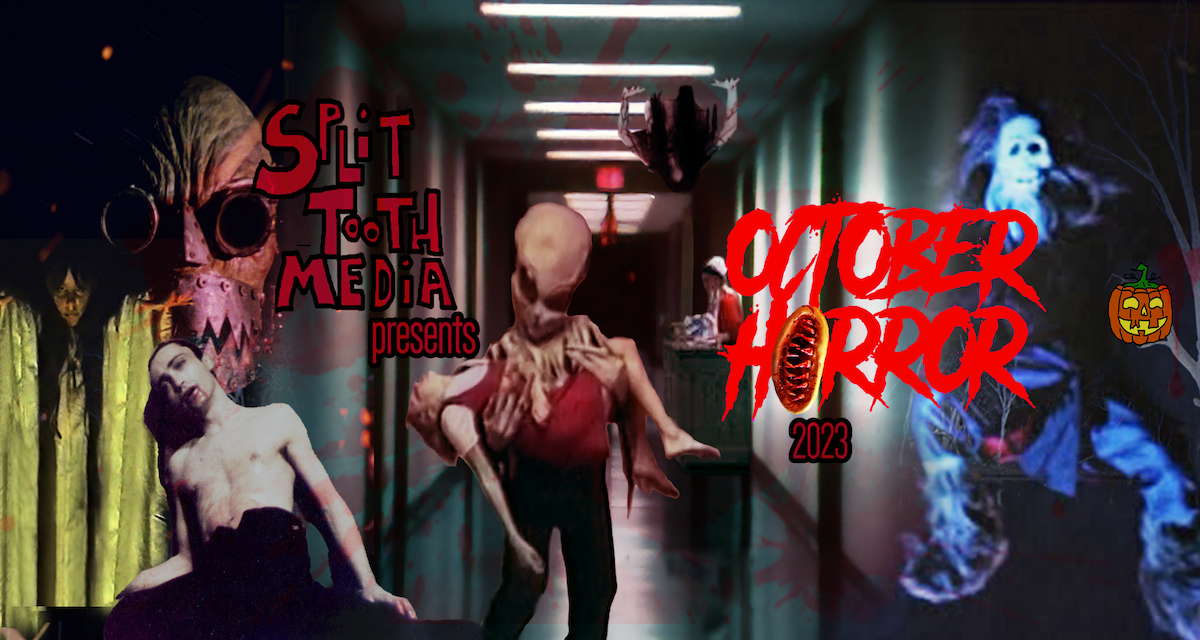
Stay up to date with all things Split Tooth Media and follow Oliver on Twitter
(Split Tooth may earn a commission from purchases made through affiliate links on our site.)

